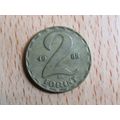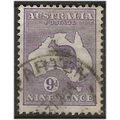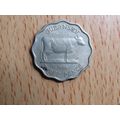Pontcycyllte Aqueduct, Llangollen Canal, Wrexham - local postcard
- Condition : Used
- Dispatch : 2 Days
- Brand : None
- ID# : 140807331
- Quantity : 1 item
- Views : 655
- Location : United Kingdom

- Seller : justthebook (+1703)
- Barcode : None
- Start : Wed 08 Jul 2015 00:35:59 (BST)
- Close : Run Until Sold
- Remain : Run Until Sold
More Listings from This Seller view all
Seller's Description
- Postcard
- Picture / Image: The Llangollen Canal - Pontcysyllte Aqueduct, this is just within the modern county of Wrexham [formerly in Denbighshire]
- Publisher: Sheila Halsall
- Postally used: no
- Stamp: n/a
- Postmark(s): n/a
- Sent to: n/a
- Notes / condition:
Please ask if you need any other information and I will do the best I can to answer.
Image may be low res for illustrative purposes - if you need a higher definition image then please contact me and I may be able to send one. No cards have been trimmed (unless stated).
------------------------------------------------
Postage & Packing:
Postage and packing charge should be showing for your location (contact if not sure).
No additional charges for more than one postcard. You can buy as many postcards from me as you like and you will just pay the fee above once. Please wait for combined invoice. (If buying postcards with other things such as books, please contact or wait for invoice before paying).
Payment Methods:
UK - PayPal, Cheque (from UK bank) or postal order
Outside UK: PayPal ONLY (unless otherwise stated) please. NO non-UK currency checks or money orders (sorry).
NOTE: All postcards are sent in brand new stiffened envelopes which I have bought for the task. These are specially made to protect postcards and you may be able to re-use them. In addition there are other costs to sending so the above charge is not just for the stamp!
I will give a full refund if you are not fully satisfied with the postcard.
----------------------------------------------
Text from the free encyclopedia WIKIPEDIA may appear below to give a little background information (internal links may not work) :
*************
The Pontcysyllte Aqueduct (Welsh pronunciation: [?p?ntk?'s??t?], full name in Welsh: Traphont Ddwr Pontcysyllte) is a navigable aqueduct that carries the Llangollen Canal over the valley of the River Dee in Wrexham County Borough in north east Wales. Completed in 1805, it is the longest and highest aqueduct in Britain, a Grade I Listed Building[1] and a World Heritage Site.
When the bridge was built it linked the villages of Froncysyllte, at the southern end of the bridge in the Cysyllte township of Llangollen parish (from where it takes its name[2]), and Trevor (Trefor in Welsh), at the northern end of the bridge in the Trefor Isaf township of Llangollen parish. Both townships were later transferred to Wrexham County Borough following local government reorganisation.
The name is in the Welsh language and means ""Cysyllte Bridge"".[2] For most of its existence it was known as Pont y Cysyllte (""Bridge of Cysyllte""). Other translations such as ""Bridge of the Junction"" or ""The Bridge that links"" are modern, and incorrect, inventions, from the literal English translation of cysyllte being ""junctions"" or ""links"", as the township of Cysyllte existed for centuries before the bridge was built.
The aqueduct, built by Thomas Telford and William Jessop, is 1,007 ft (307 m) long, 11 ft (3.4 m) wide and 5.25 ft (1.60 m) deep. It consists of a cast iron trough supported 126 ft (38 m) above the river on iron arched ribs carried on nineteen hollow masonry piers (pillars). Each span is 53 ft (16 m) wide. Despite considerable public scepticism, Telford was confident the construction method would work: he had previously built at least one cast iron trough aqueduct – the Longdon-on-Tern aqueduct on the Shrewsbury Canal, still visible in the middle of a field, though the canal was abandoned years ago. Part of what was originally called the Ellesmere Canal, it was one of the first major feats of civil engineering undertaken by Telford, by then a leading civil engineer, supervised by Jessop, the more experienced canal engineer. The iron was supplied by William Hazledine from his foundries at Shrewsbury and nearby Cefn Mawr. It was opened on 26 November 1805, having taken around ten years to design and build at a total cost of £47,000. Adjusted for inflation this is equivalent to no more than £3,330,000 in 2014[3], but bore a much larger relationship to contemporary GDP of only some £400 million.[4] On the other hand such a project would cost more today due to factors that did not apply in the early 19th century such as higher real wages, safety measures, new regulations and taxes, financing fees and so on.
At the time of the aqueduct's completion, the canal terminated at a wharf slightly to its north. A feeder to bring water from the Horseshoe Falls beyond Llangollen was completed three years later in 1808, and at some point after 1820 the Plas Kynaston Canal was built to serve industry in the Cefn Mawr and Rhosymedre areas. There might have been another canal extension (""Ward's"") but detailed records do not survive.[5]
The mortar used lime, water and ox blood.[6] The iron castings for the trough were produced at the nearby Plas Kynaston Foundry, Cefn Mawr, which was built by the Shrewsbury ironfounder and millwright William Hazledine in the hope of gaining the contract. The rib castings may have been made at Hazledine's original works at Coleham, near Shrewsbury.[7] The trough was made from flanged plates of cast iron, bolted together, with the joints bedded with Welsh flannel and a mixture of white lead and iron particles from boring waste.[8] The plates are not rectangular but shaped as voussoirs, similar to those of a stone arch. There is no structural significance to their shape: it is a decorative feature only, following the lines of the stiffening plates (see below) in the castings beneath.[8] The supporting arches, four for each span, are in the form of cast iron ribs, each cast as three voussoirs with external arches cast with an un-pierced web to give greater strength, at the cost of extra weight. Using cast iron in this way, in the same manner as the stone arch it supersedes, makes use of the material's strength in compression.[9] They also give an impression of greater solidity than would be the case were the webs pierced. This impression is enhanced by the arrangement of strips of thicker stiffening incorporated into the castings, arranged in the manner of joints between voussoirs. Cast plates are laid transversely to form the bed of the canal trough. The trough is not fastened to the arches, but lugs are cast into the plates to fit over the rib arches to prevent movement.[8] It was left for six months with water inside to check that it was watertight.[citation needed] A feature of a canal aqueduct, in contrast with a road or railway viaduct, is that the vertical loading stresses are virtually constant. According to Archimedes' principle, the mass (weight) of a boat and its cargo on the bridge pushes an equal mass of water off the bridge
The towpath is mounted above the water, with the inner edge carried on cast-iron pllars in the trough. This arrangement allows the water displaced by the passage of a narrow boat to flow easily under the towpath and around the boat, enabling relatively free passage. Pedestrians, and the horses once used for towing, are protected from falling from the aqueduct by railings on the outside edge of the towpath, but the holes in the top flange of the other side of the trough, capable of mounting railings, were never used. The trough sides rise only about 6 inches (15 cm) above the water level, less than the depth of freeboard of an empty narrow boat, so the helmsman of the boat has no visual protection from the impression of being at the edge of an abyss. The trough of the Cosgrove aqueduct has a similar structure, although it rests on trestles rather than iron arches. It is also less impressively high.
Every five years the ends of the aqueduct are closed and a plug in one of the highest spans is opened to drain the canal water into the River Dee below, for inspection and maintenance of the trough.[10][11]
The canal effectively ends after a short distance on the north side, apart from a feeder to the Horseshoe Falls on the River Dee via Llangollen. The terrain northwards appears to have been the main problem in preventing significant further extension: apart from one or more local spurs of perhaps a thousand yards serving industry south of Cefn Mawr and towards Rhosymedre [5] other traffic was handled by the Ruabon Brook Tramway which climbed towards Acrefair and Plas Bennion, this was eventually upgraded to steam operation and extended towards Rhosllannerchrugog and Wrexham.
The aqueduct and surrounding lands were submitted to the ""tentative list"" of properties being considered for UNESCO World Heritage Site status in 1999.[12] The aqueduct was suggested as a contender in 2005—its 200th anniversary year[13]—and it was formally announced in 2006 that a larger proposal, covering a section of the canal from the aqueduct to Horseshoe Falls would be the United Kingdom's 2008 nomination.[14][15]
The length of canal from Rhoswiel, Shropshire to the Horseshoe Falls including the main Pontcysyllte Aqueduct structure as well as the older Chirk Aqueduct, were visited by assessors from UNESCO during October 2008, to analyse and confirm the site management and authenticity. The aqueduct was inscribed by UNESCO on the World Heritage List on 27 June 2009.[16]
In March 2010 it was reported that the site had attracted a thriving community of otters.[17]
Mae Pontcysyllte yn draphont a ellir ei forio, sy'n dwyn Camlas Llangollen drost ddyfryn Afon Dyfrdwy rhwng pentrefi Trefor a Froncysyllte, i'r dwyrain o Langollen. Cwblheuwyd adeiladu'r bont yn 1805, ond hon hyd heddiw, yw'r draphont hiraf ac uchaf ym Mhrydain, ac mae'n adeiladwaith sydd wedi ei restru ar Raddfa I Adeiladau Rhestredig.[1] Yn ogystal mae'n un o Safleoedd Treftadaeth y Byd Cymru.
Adeiladwyd y draphont gan Thomas Telford a William Jessop, mae'n 1,007 troedfedd o hyd, 11 troedfedd o led a 5 troedfedd 3 modfedd o ddyfner. Mae wedi ei gyfansoddi o gafn haearn bwrw wedi ei ddal 126 troedfedd uwchben yr afon gan 19 colofn o waith maen cafn. Mae gan bob colofn rychwant o 53 troedfedd. Roedd llawer yn amheus o'r adeiladwaith, ond roedd Telford yn hyderus: adeiladodd oleiaf un draphont i'r cynllun hwn gynt (sef Traphont Longdon-on-Tern) ar Gamlas Amwythig, mae hon dal i'w gweld yno heddiw yng nghanol cae, er gadawyd y camlas flynyddoedd yn ôl.
Mae'r cymrwd a ddefnyddwyd i'w hadeiladu yn cynnwys calch, dwr a gwaed ych. Cynhyrchwyd y taflau haearn yn Ffowndri Plas Kynaston, a thaflwyd pob uniad cynffonnog i fewn i'r nesaf. I galchu'r cymalau, defnyddwyd gwlân Cymreig wedi ei drochi mewn siwgr berwedig, ac wedyn eu seilio â phlwm. Gadawyd ef am chwe mis i gadarnhau ei fod yn dal dwr cyn cael ei ddefnyddio.
Yn ran o be'i elwyd yn wreiddiol, Camlas Ellesmere, roedd yn un o gampweithiau cyntaf peirianneg sifil a gyflawnwyd gan y peiriannwr sifil enwog Thomas Telford (a gafodd ei orchwylio gan y peiriannwr camlas mwy profiadol, William Jessop). Cyflenwyd y haearn gan William Hazeldine o'i ffowndri yn Amwythig a gerllaw yng Nghefn Mawr. Agorwyd y draphont ar 26 Tachwedd 1805, ar ôl cymryd tua deng mlynedd a £47,000 i'w dylunio a'i hadeiladu.
Mae'r llwybr halio wedi ei gydbwyso drost y cafn, sydd yr un lled â'r draphont i alluogi i gychod cul symyd yn fwy rhydd drost y dwr. Mae cerddwyr wedi eu amddiffyn gan rheiliau ar un ochr allanol y llwybr, ond ni ddefnyddwyth y tyllau ar gyfer y rheiliau ar ochr arall y llwybr. Gan fod ymyl y cafn ond chwe modfedd uwchben y dwr, ac felly odan bwrdd y cychod cul, does dim byd rhwng gyrrwr y cwch a disgyniad anferthol i waelod y dyffryn.
Roedd handlen hygyrch yn arfer bod mewn cwtsh ar y llwybr troed yng nghanol y rhychwant canolog, achosi tynnu'r handlen hwn i ddwr dasgu i lawr i'r afon isod. Gall dal weld y tasgiad pob cwpl o flynyddoedd pan wagir y draphont er mwynt ei chynnal.
type=printed
city/ region=llangollen
period=post-war (1945 - present)
postage condition=unposted
number of items=single
size=continental/ modern (150x100mm)
Listing Information
| Listing Type | Gallery Listing |
| Listing ID# | 140807331 |
| Start Time | Wed 08 Jul 2015 00:35:59 (BST) |
| Close Time | Run Until Sold |
| Starting Bid | Fixed Price (no bidding) |
| Item Condition | Used |
| Bids | 0 |
| Views | 655 |
| Dispatch Time | 2 Days |
| Quantity | 1 |
| Location | United Kingdom |
| Auto Extend | No |




 for 1 item(s)
for 1 item(s)

















